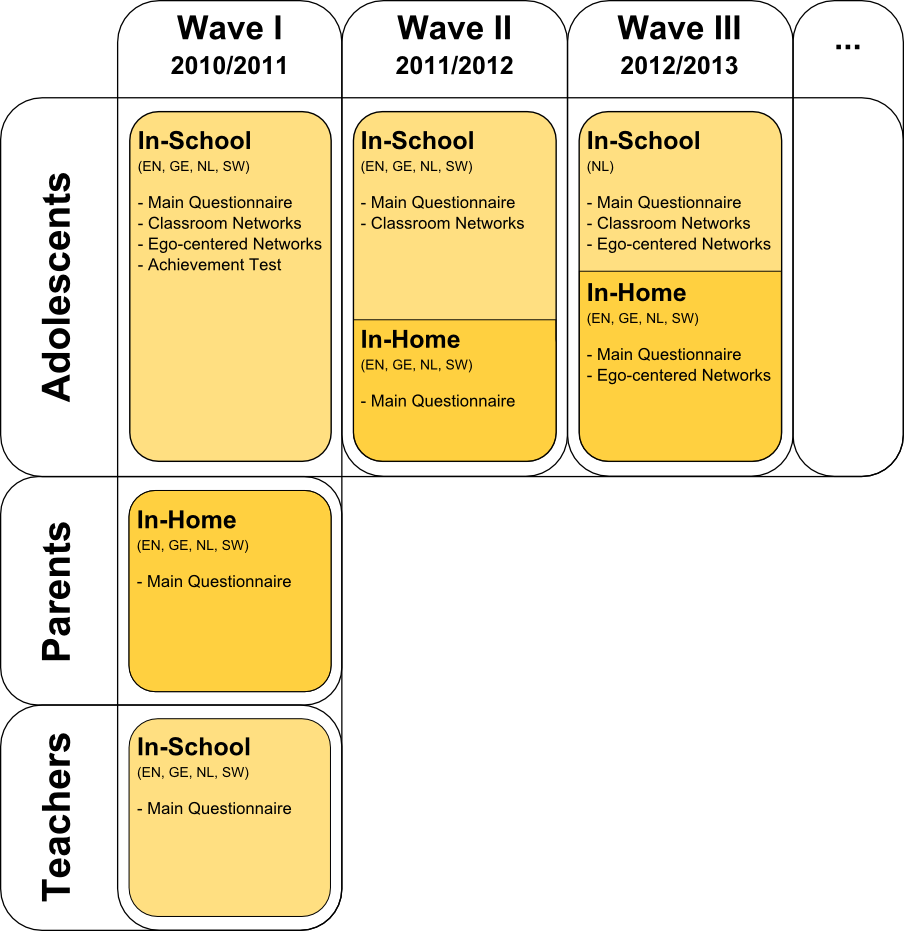In each of the four countries we started data collection with a sample of 14 year-old children in the year 2010. This sample comprises immigrant children of different generations as well as a native reference group. The former group was oversampled in order to increase the effective sample size for minority-majority group comparisons.
Strategy
The CILS4EU study applied school-based sampling. In the first wave, we sampled almost 500 schools (net) and interviewed more than 18,000 pupils in four countries. In order to ensure that the sample contains a sufficient number of children of immigrants, schools with high immigrant proportions in this age group were oversampled. This sampling scheme not only allows us to technically overrepresent immigrant children but it also represents a powerful design for studying the impact of ethnic concentration and inter-ethnic contacts on key integration outcomes.
For more detailed information about sampling procedures, weighting, development of the instruments, and the actual fieldwork process, have a look at our technical reports here. An overview of sample sizes by country is available here.

Wave 1 (2010/11)
In the first wave, the school interviews consisted of a 20- to 30-minute written test in basic cognitive and language abilities, as well as a 45-minute self-completion questionnaire (including questions about students' ego-centered networks and classroom networks).
In addition to this, teachers were asked to fill out a supplementary questionnaire so information about relevant characteristics at the classroom- and school-levels could be captured. Furthermore, 30-minute telephone interviews were conducted with one parent of each child.
Wave 2 (2011/12)
In the second wave, most of the respondents were reapproached via their schools. Like in wave 1, a 45-minute self-completion questionnaire was administered. For all respondents who were interviewed in school, we collected information on their classroom networks again.
The small number of school-leavers and -changers were contacted individually via telephone and (e-)mail. They answered only the questions of the youth main questionnaire.
Wave 3 (2012/13)
Between the second and the third wave of the study, most respondents either left school or made the transition to a higher level of education. Except for the Dutch part of the study, interviews of the third wave were therefore conducted mainly via telephone, but also as online or postal interviews.
Students answered a short version of the main questionnaire. In this wave, we also collected information on the ego-centered networks of the respondents again.
Follow-Up Studies (ongoing)
The CILS4EU data collection that is standardized across four countries ended after these three waves. However, starting in 2014, the country teams conducted country-specific follow-up studies independent from each other. More information about these can be found here.